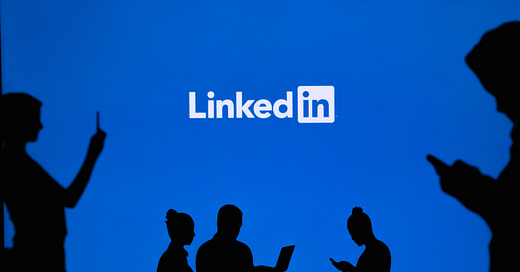When Did LinkedIn Turn Into Facebook?
The change in tone raises the question of who this professional social network is really for.
I’ve been wondering for quite some time when LinkedIn became like Facebook.
LinkedIn—the online platform of choice for professional networking and job searching—used to be the place where users would announce promotions, job changes and other career milestones. There are still a lot of posts along those lines, but now people also use LinkedIn to post pictures of their children or grandchildren, share information about health challenges, or post inspirational messages or short personal memoirs.
I didn’t notice the transition taking place, and I mostly like the new tone—it’s a lot more interesting than reading about the latest conference someone attended. But it has made me wonder how and why the purpose and utility of LinkedIn began to change.
A recent article by Danielle Abril in the Washington Post, “LinkedIn is getting weirdly personal and not everyone likes it,” suggests that the transition happened “after the pandemic blurred the lines between work and home, [and] many employees reprioritized their lives, giving more emphasis to well-being and family.” While this may be true, Abril also makes clear that people aren’t sharing their personal lives on LinkedIn in order to make friends or garner “likes.” Instead, most are doing this to “humanize themselves to their professional network” or to tie their personal stories to “lessons that could be applied to business.” We Americans are a utilitarian bunch, and I suspect that this new over-sharing-in-order-to-be-more-successful-in-business is not uniformly occurring across the globe.
As for what LinkedIn is for, I misspoke when I suggested above that a major purpose of LinkedIn is job searching. While this may be true from the perspective of individual users, this makes it sound as if job seekers are the site’s customers when in fact they are the product.
Let’s be clear that while LinkedIn does make good money from selling users premium subscriptions (what the company calls “membership privileges”), its business model is primarily based on advertising (what it calls “marketing solutions”) and recruitment services (what it calls “talent solutions”). In other words, the company’s core revenue-generating market consists of head hunters, recruiters and employers, who pay handsomely for special access to the data the company collects about its users. In this way, LinkedIn was always like Facebook, in that its success is based upon the personal data that users freely make available for LinkedIn to monetize.
It has become popular for workplace managers to talk about the importance of creating a culture where employees feel comfortable bringing their “whole selves” to work. Are they doing this for the altruistic purpose of making employees happier? No, in a capitalist economy where the bottom line is always paramount, encouraging this kind of openness is about increasing efficiency and profitability. LinkedIn has become a key component in this new corporate strategy. It’s the new Facebook for grown-ups. Caveat venditor!





